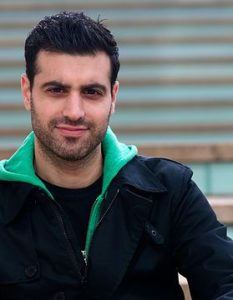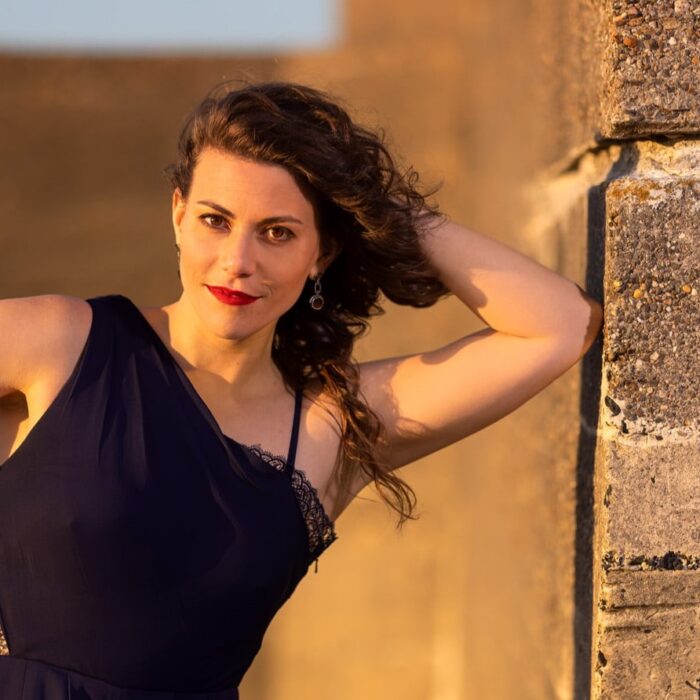
Creating A Festival – Jonathon Loy On The Growth Of Berkshire Opera Festival
By Francisco SalazarIs it still reasonable to establish an opera festival in the midst of the summer in the U.S.? It’s not a simple question to answer but for opera lovers and audiences thirsting for the art form during the hot and humid days of July and August, Jonathon Loy, General Director of the Berkshire Opera, has the answer.
In just its second year, the Berkshire Opera Festival has a mission of filling a void for opera enthusiasts with high-quality productions.
“The point is to create a memorable operatic festival for the summer,” Loy told OperaWire in an exclusive interview.
Beginnings
For more than a decade, Loy has been an active opera director in the United States in theaters such as Opera Las Vegas, Center City Opera Theater, Opera Fairbank and, most notably, the Metropolitan Opera, as Guest and Staging Director. There, he has overseen revivals of “L’Italiana in Algeri,” “Aida,” “I Puritani” and “La Traviata,” among others.
With a passion for the art form, Loy sought out a format for bringing his perspective to the opera world. The result was Berkshire Opera Festival; fulfilling the area’s lack of opera in a region where he spent his childhood.
“There was a company in the Berkshires but it went defunct in 2008 or 09. Having grown up in the Berkshires, I know it well; it’s a culturally-rich area. And there are so many companies doing things in the summer but there’s no opera, so we wanted to fill that void.”
However, it didn’t happen immediately.
“We incorporated in 2014 and we gave ourselves two years to inaugurate.”
Those two years were important for preparation. The company first needed to figure out what it was presenting, how it would run the season and, of course, it needed to find the right theater, cast, orchestra, and means of promotion. The result of its inaugural season was a success! In 2016, the festival opened its doors with an acclaimed production of Puccini’s “Madama Butterfly.”
“‘Madama Butterfly’ was a major critical success almost selling out by word of mouth by the last show,” Loy noted.
A Second Season
After a critical hit, Loy and his team went to work in preparing the second season. For him, that meant choosing something well known, but not one of opera’s standard ‘Top five.”
“‘Butterfly’ was a strategic choice to do something popular,” he noted about his choice for the first season. “We had to think really hard what the next season would be because if we did a ‘top five opera’ we were immediately going to pigeonhole ourselves.”
The answer? Strauss’ “Ariadne auf Naxos.”
“We felt ‘Ariadne,’ while obviously known to people in the business, is a lesser known work and it’s a statement that we’re not going to do ‘Traviata,’ ‘Carmen,’ or ‘Bohème’ every year. Don’t expect it. That doesn’t mean we won’t ever do those, because we want to give the public what they want, but we also want to challenge and educate them.”
The choice seems like a risky one given that the composer’s works can be rather long and at times “heady” for certain audiences. But this opera, which is just under two hours, contains some of the most moving and beloved melodies from the composer.
Moreover, choosing “Ariadne auf Naxos” is an opportunity to include additional summer programming that is themed around the opera. “Gods and Monsters” featuring the cast of Ariadne and another concert, “Reluctant Revolutionary,” featuring songs by Strauss, are on the program.
Preparation
For Loy and Co-Founder, Brian Garman, the task begins almost immediately after the end of the season.
Loy and Garman not only choose the opera but they have to start creating awareness, coordinating schedules and look for housing.
“The challenges are enormous. Even artist housing, one of the smaller details that people don’t think about, is a financial challenge. There has to be budget and you have to find housing. You have to see who you can house together or who has to be alone. All those types of things.”
“Rehearsal space is also a challenge. The first season, our offices weren’t ready, so we had to scramble to find rehearsal space and now, thankfully, St. James’ place is done so we have our offices and rehearsal space in the same building. That solves so many logistical challenges, it’s really exciting for us.”
After that comes fundraising, the burden of arts institutions the world over.
“The largest challenge of any organization is fundraising and putting a board together,” Loy said before striking a more positive tone. “But the biggest challenges we face are solvable and manageable.”
Juggling financial concerns while maintaining quality for the success of the festival, Loy employs several local artists, who can provide their own housing.
“The orchestra, half local and half from the tri-state area, has to be able to provide their own housing. The artists, designers, concertmaster and associate concertmaster who come up, are housed.”
Garman, who assembled the entire chorus and orchestra, put it plainly, “‘There are two options. We could contract an orchestra but then we have no control over them or you can put it together from scratch.’ While boasting of only hiring the “greatest singers” Loy admits he has complete trust in the talents of his Co-Founder, who easily scouted all the finest talent and employed the company’s great orchestra manger.
Directing an Opera
On top of being General Director, Loy is also directing the new production of “Ariadne”; requiring double duty. Fortunately, his experience working extensively at the Metropolitan Opera has supplied him with the skills to stage his own works, especially one like “Ariadne,” which is a first for him.
“What I always do is translate every word of the score. Once I’ve done the translation, I sit with a dictionary and I read through it several times so I have the gist of it in my head. Then I put the score down and listen to it obsessively. After that, it becomes locked in your head. As I get closer to the production, I sit down again with music and the score. If I try to outline the text in my head as I listen to the music, I can connect things. The work informs itself.”
And Loy is adamant about that fact; the text is crucial to understanding the work.
“You can’t direct a show if you don’t know it by heart. As I listen and listen, ideas form in my head about the staging that I want to do. But I’m not the kind of director that writes any kind of blocking in the score. I may have some ideas but those tend to go away once you’re with the artists. Everything changes.”
“With any artist, the best thing is to go into a room with an open mind, no matter how many times they’ve done the role. It also helps if someone has done the role a million times, they know the role and can help you, because they have a certain point of view. The director’s job is to be a psychologist, reading people to get them to do what you want them to do without them realizing it.”
Opera is always a challenging medium because there’s never enough time. Schedules collide, time is sparse and performers are busy. However, that’s an obstacle that Loy has already learned to deal with and uses it to his favor.
“We spend two and a half to three weeks in the rehearsal room and then we have a week in the theaters; about a month of rehearsal. Half the work has already been done for us, by the composer. If you are an opera director, you understand that there is already something set in stone.When you come to terms with that, it’s so much easier to direct the show and do what you set out to accomplish. No matter how much work one does in a rehearsal, the story, in a way, is half-formed for you already.”
This production’s biggest challenge will be the large orchestra. A group of so many pieces is often not necessary for Italian operas, but it’s a requirement for Strauss’ lush music. For this, Loy is addressing that with the scenic designer.
“I am designing around the orchestra, which will be set on the stage. With the size of the theater, we tend toward minimalist productions; it’s better not to be distracted.”
Engaging the Audience
Every major opera company is facing similar issues with getting the word out to the audience and selling out their houses; something Loy has really worked hard on in order to achieve success.
“In the summer we do all the print ads and we’re finally pushing social media and exploring every way we can use it. We also have a great relationship with Tanglewood, who has really helped us out with marketing, and the Ovation Club, which holds our events. In terms of reaching new people, I think the Ovation Club is one of the best ways to try and get in touch. If that grows along with word of mouth, then trying to convince people to spend a weekend here is what we want,” continued Loy.
Part of that is also adding video content that is working to engage and educate its new and established audience members.
“Our director of marketing and community relations started a webcast series, for people who are signed up on our email list and our YouTube channel. In the first episode, Brian and I spoke about the origins of the company and it was also an introduction to “Ariadne.””
With social media comes the question on how to engage the millennial audience. And while Loy knows that his core opera-loving community doesn’t need fancy social media campaigns, he is aware that the youth is still a hard nut to crack.
“You just try to engage your community. If you have them engaged, that’s the best thing you can do. We’re in a vacation spot and while there certainly are locals, our audience is elsewhere in the winter season. A newsletter is the best way for us to let people know who we are and what’s going on year round.”
The Long Term
Loy made it clear that Berkshire Opera Festival is here to stay and grow. He hopes to add a second opera to the festival so he can experiment with diverse repertory.
“The idea would be to do a second stage show in addition to the main stage show. One of the two would be a better known work and the other would be a lesser-known or newly commissioned opera. ”
Loy also seeks to develop a young artist program where he can help shape young singers, giving them their own production.
“A third show would include singers from a young artist program, to be added in the future. They would come for the summer, train, do comprimario roles and star in their own production. Eventually it would be three shows happening, on top of the current ancillary festival programming, such as recitals.”
Matching the themes of their main stage rep, the company can also tap into the vast pool of talent in the Berkshires, an ages-old retreat for artists of all sorts; deepening the breadth of their artistry and showcasing painters, sculptors, actors, and others who flock to the area for their summer enrichment.
“We could be doing other things depending on what the main stage show is. We can have some types of dance or film screening, whatever the arc is and what it’s tied too,” adds Loy, in an effort to use the artistic hub to it’s fullest.
Stay up to date with the festival’s second year at berkshireoperafestival.com and click “Support” to watch this newly minted company grow.


